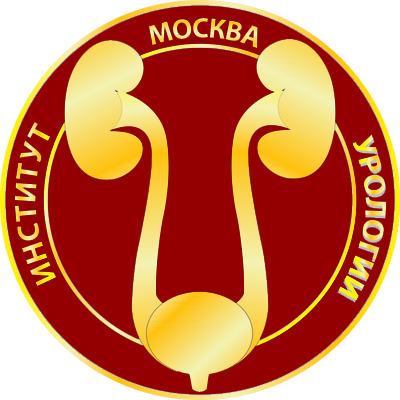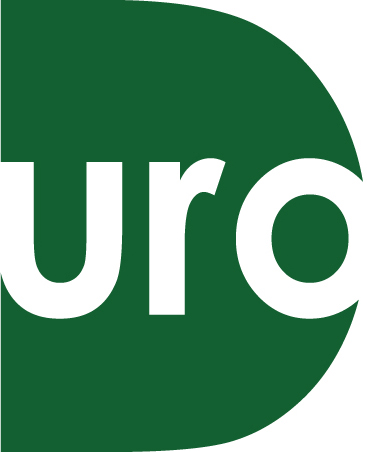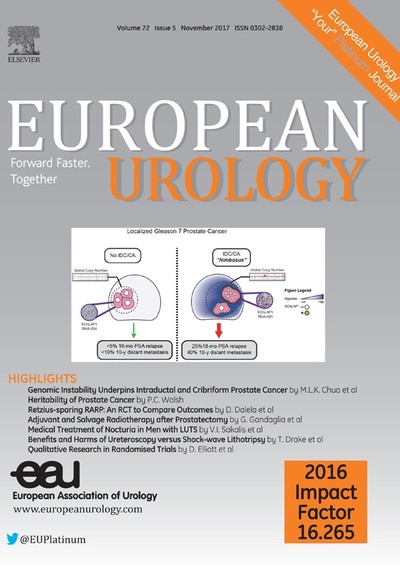Актуальность
Относительная длина теломер в лейкоцитах периферической крови изучалась как потенциальный биомаркер риска почечноклеточного рака (ПКР) в нескольких исследованиях, которые дали противоречивые результаты.
Цель исследования
Мы выполнили анализ генетических вариантов, ассоциированных с длиной теломер лейкоцитов, чтобы оценить связь между длиной теломер и риском ПКР с использованием менделевской рандомизации, с подходом, на который не влияет временная вариабельность и обратная интерпретация причинно-следственной связи, которые могли подействовать на предыдущие исследования.
Дизайн, условия и участники исследования
Генотипы девяти вариантов, ассоциированных с длиной теломер, от 10784 случаев и 20406 контролей без рака, полученные в шести исследованиях на ассоциации в целом геноме (GWAS) при ПКР, были объединены во взвешенный индекс генетического риска (ИГР), предиктивный в отношении длины теломер лейкоцитов.
Определение результатов и статистический анализ
Отношения вероятностей (ОВ), связанные с ИГР и риском ПКР, были вычислены в индивидуальных наборах данных GWAS и комбинированы с помощью мета-анализа.
Результаты и ограничения
Генетически определённое увеличение длины теломер было ассоциировано с повышенным риском ПКР (ОВ = 2.07 на прогнозируемое увеличение на одно килооснование, 95%-ный доверительный интервал [ДИ]: = 1.70–2.53, p < 0.0001). В рамках анализа чувствительности мы исключили два варианта длины теломер в неравновесии сцепленности (R2 > 0.5) с GWAS-идентифицированными вариантами риска ПКР (rs10936599 и rs9420907) с ИГР длины теломер; несмотря на это исключение, сохранялась статистически значимая ассоциация между ИГР и риском ПКР (ОВ = 1.73, 95% ДИ = 1.36–2.21, p < 0.0001). Эксплоративный анализ по индивидуальным гистологическим подтипам предполагал сопоставимые ассоциации с ИГР длины теломер для светлоклеточного (N = 5573, ОВ = 1.93, 95% ДИ = 1.50–2.49, p < 0.0001), папиллярного (N = 573, ОВ = 1.96, 95% ДИ = 1.01–3.81, p = 0.046) и хромофобного ПКР (N = 203, ОВ = 2.37, 95% ДИ = 0.78–7.17, p = 0.13).
Заключение
Наше исследование внесло свой вклад в растущий объём доказательной базы, указывающий на то, что большая длина теломер важна для риска ПКР.
Ключевые слова: почечноклеточный рак, длина теломер, генетические варианты, менделевская рандомизация, риск.
Genetic Variants Related to Longer Telomere Length are Associated with Increased Risk of Renal Cell Carcinoma
By: Mitchell J. Machiela, Jonathan N. Hofmann, Robert Carreras-Torres, Kevin M. Brown, Mattias Johansson, Zhaoming Wang, Matthieu Foll, Peng Li, Nathaniel Rothman, Sharon A. Savage, Valerie Gaborieau, James D. McKay, Yuanqing Ye, Marc Henrion, Fiona Bruinsma, Susan Jordan, Gianluca Severi, Kristian Hveem, Lars J. Vatten, Tony Fletcher, Kvetoslava Koppova, Susanna C. Larsson, Alicja Wolk, Rosamonde E. Banks, Peter J. Selby, Douglas F. Easton, Paul Pharoah, Gabriella Andreotti, Laura E. Beane Freeman, Stella Koutros, Demetrius Albanes, Satu Mannisto, Stephanie Weinstein, Peter E. Clark, Todd E. Edwards, Loren Lipworth, Susan M. Gapstur, Victoria L. Stevens, Hallie Carol, Matthew L. Freedman, Mark M. Pomerantz, Eunyoung Cho, Peter Kraft, Mark A. Preston, Kathryn M. Wilson, J. Michael Gaziano, Howard S. Sesso, Amanda Black, Neal D. Freedman, Wen-Yi Huang, John G. Anema, Richard J. Kahnoski, Brian R. Lane, Sabrina L. Noyes, David Petillo, Leandro M. Colli, Joshua N. Sampson, Celine Besse, Helene Blanche, Anne Boland, Laurie Burdette, Egor Prokhortchouk, Konstantin G. Skryabin, Meredith Yeager, Mirjana Mijuskovic, Miodrag Ognjanovic, Lenka Foretova, Ivana Holcatova, Vladimir Janout, Dana Mates, Anush Mukeriya, Stefan Rascu, David Zaridze, Vladimir Bencko, Cezary Cybulski, Eleonora Fabianova, Viorel Jinga, Jolanta Lissowska, Jan Lubinski, Marie Navratilova, Peter Rudnai, Neonila Szeszenia-Dabrowska, Simone Benhamou, Geraldine Cancel-Tassin, Olivier Cussenot, H. Bas Bueno-de-Mesquita, Federico Canzian, Eric J. Duell, Börje Ljungberg, Raviprakash T. Sitaram, Ulrike Peters, Emily White, Garnet L. Anderson, Lisa Johnson, Juhua Luo, Julie Buring, I-Min Lee, Wong-Ho Chow, Lee E. Moore, Christopher Wood, Timothy Eisen, James Larkin, Toni K. Choueiri, G. Mark Lathrop, Bin Tean Teh, Jean-Francois Deleuze, Xifeng Wu, Richard S. Houlston, Paul Brennan, Stephen J. Chanock, Ghislaine Scelo, Mark P. Purdue
- a Division of Cancer Epidemiology and Genetics, National Cancer Institute, National Institutes of Health, Department Health and Human Services, Bethesda, MS, USA;
- b International Agency for Research on Cancer (IARC), Lyon, France;
- c St. Jude Children’s Research Hospital, Memphis, TN, USA;
- d Department of Epidemiology, Division of Cancer Prevention and Population Sciences, The University of Texas MD Anderson Cancer Center, Houston, TX, USA;
- e Icahn School of Medicine, New York, NY, USA;
- f Cancer Epidemiology and Intelligence Division, Cancer Council Victoria, Melbourne, Australia;
- g QIMR Berghofer Medical Research Institute, Herston, Queensland, Australia;
- h School of Public Health, The University of Queensland, Brisbane, Australia;
- i Centre for Epidemiology and Biostatistics, Melbourne School of Population and Global Health, The University of Melbourne, Carlton, Australia;
- j Human Genetics Foundation (HuGeF), Torino, Italy;
- k Centre de Recherche en Épidémiologie et Santé des Populations, Université Paris-Saclay, UPS, USQ, Gustave Roussy, Villejuif, France;
- l HUNT Research Centre, Department of Public Health and General Practice, Norwegian University of Science and Technology, Levanger, Sweden;
- m Department of Public Health and General Practice, Faculty of Medicine, Norwegian University of Science and Technology, Trondheim, Norway;
- n London School of Hygiene and Tropical Medicine, University of London, London, UK;
- o Regional Authority of Public Health in Banska Bystrica, Banska Bystrica, Slovakia;
- p Institute of Environmental Medicine, Karolinska Institutet, Stockholm, Sweden;
- q Leeds Institute of Cancer and Pathology, University of Leeds, Cancer Research Building, St James’s University Hospital, Leeds, UK;
- r Department of Oncology, and Department of Public Health and Primary Care, University of Cambridge, Cambridge, UK;
- s National Institute for Health and Welfare, Helsinki, Finland;
- t Vanderbilt-Ingram Cancer Center, Nashville, TN, USA;
- u American Cancer Society, Atlanta, GA, USA;
- v Dana-Farber Cancer Institute, Boston, MA, USA;
- w Brown University, Providence, RI, USA;
- x Harvard T.H. Chan School of Public Health, Boston, MA, USA;
- y Brigham and Women’s Hospital, Boston, MA, USA;
- z Veterans Administration, Boston, MA, USA;
- aa Division of Urology, Spectrum Health, Grand Rapids, MI, USA;
- bb College of Human Medicine, Michigan State University, Grand Rapids, MI, USA;
- cc Van Andel Research Institute, Center for Cancer Genomics and Quantitative Biology, Grand Rapids, MI, USA;
- dd Centre National de Recherche en Genomique Humaine (CNRGH), Institut de biologie François Jacob, Commissariat à l’Energie Atomique et aux Energies Alternatives, Evry, France;
- ee Fondation Jean Dausset-Centre d’Etude du Polymorphisme Humain, Paris, France;
- ff Center ‘Bioengineering’ of the Russian Academy of Sciences, Moscow, Russian Federation;
- gg Kurchatov Scientific Center, Moscow, Russian Federation;
- hh Clinic for Nephrology, Military Medical Academy, Belgrade, Serbia;
- ii International Organization for Cancer Prevention and Research (IOCPR), Belgrade, Serbia;
- jj Department of Cancer Epidemiology and Genetics, Masaryk Memorial Cancer Institute, Brno, Czech Republic;
- kk Second Faculty of Medicine, Institute of Public Health and Preventive Medicine, Charles University, Prague, Czech Republic;
- ll Department of Preventive Medicine, Faculty of Medicine, Palacky University, Czech Republic;
- mm National Institute of Public Health, Bucharest, Romania;
- nn Russian N.N. Blokhin Cancer Research Centre, Moscow, Russian Federation;
- oo Carol Davila University of Medicine and Pharmacy, Th. Burghele Hospital, Bucharest, Romania;
- pp First Faculty of Medicine, Institute of Hygiene and Epidemiology, Charles University, Prague, Czech Republic;
- qq International Hereditary Cancer Center, Department of Genetics and Pathology, Pomeranian Medical University, Szczecin, Poland;
- rr The M Sklodowska-Curie Cancer Center and Institute of Oncology, Warsaw, Poland;
- ss National Public Health Center, National Directorate of Environmental Health, Budapest, Hungary;
- tt Department of Epidemiology, Institute of Occupational Medicine, Lodz, Poland;
- uu INSERM U946, Paris, France;
- vv CNRS UMR8200, Institute Gustave Roussy, Villejuif, France;
- ww CeRePP, Paris, France;
- xx UPMC Univ Paris 06, Institut Universitaire de Cancérologie, Paris, France;
- yy AP-HP, Department of Urology, Hopitaux Universitaires Est Parisien Tenon, Paris, France;
- zz Department for Determinants of Chronic Diseases (DCD), National Institute for Public Health and the Environment (RIVM), Bilthoven, The Netherlands;
- aaa Department of Gastroenterology and Hepatology, University Medical Centre, Utrecht, The Netherlands;
- bbb Department of Epidemiology and Biostatistics, The School of Public Health, Imperial College London, St Mary’s Campus, Norfolk Place, London, UK;
- ccc Department of Social & Preventive Medicine, Faculty of Medicine, University of Malaya, Pantai Valley, Kuala Lumpur, Malaysia;
- ddd Genomic Epidemiology Group, German Cancer Research Center (DKFZ), Heidelberg, Germany;
- eee Unit of Nutrition and Cancer, Cancer Epidemiology Research Program, Catalan Institute of Oncology (ICO-IDIBELL), Barcelona, Spain;
- fff Department of Surgical and Perioperative Sciences, Urology and Andrology, Umeå University, Umeå, Sweden;
- ggg Fred Hutchinson Cancer Research Center, Seattle, WA, USA;
- hhh Department of Epidemiology and Biostatistics, School of Public Health Indiana University Bloomington, Bloomington, IN, USA;
- iii Department of Urology, The University of Texas MD Anderson Cancer Center, Houston, TX, USA;
- jjj University of Cambridge, Cambridge, UK;
- kkk Royal Marsden NHS Foundation Trust, London, UK;
- lll McGill University and Genome Quebec Innovation Centre, Montreal, QC, Canada;
- mmm The Institute of Cancer Research, London, UK
European Urology, Volume 72 Issue 5, November 2017, Pages 747–754
Keywords: Renal cell carcinoma, Telomere length, Genetic variants, Mendelian randomization, Risk
Автор перевода: Шатылко Тарас Валерьевич











Комментарии